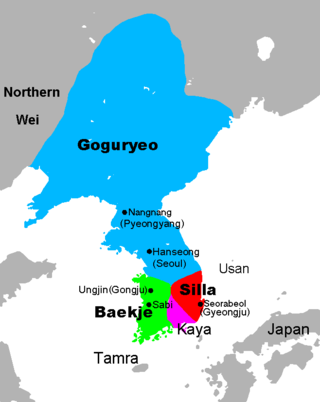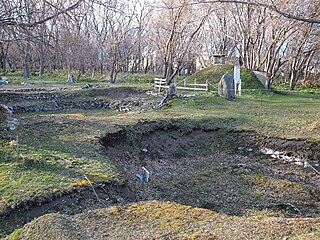The ManchusA are a Tungusic East Asian ethnic group native to Manchuria in Northeast Asia. They are an officially recognized ethnic minority in China and the people from whom Manchuria derives its name. The Later Jin (1616–1636) and Qing (1636–1912) dynasties of China were established and ruled by the Manchus, who are descended from the Jurchen people who earlier established the Jin dynasty (1115–1234) in northern China. Manchus form the largest branch of the Tungusic peoples and are distributed throughout China, forming the fourth largest ethnic group in the country. They are found in 31 Chinese provincial regions. Among them, Liaoning has the largest population and Hebei, Heilongjiang, Jilin, Inner Mongolia and Beijing have over 100,000 Manchu residents. About half of the population live in Liaoning and one-fifth in Hebei. There are a number of Manchu autonomous counties in China, such as Xinbin, Xiuyan, Qinglong, Fengning, Yitong, Qingyuan, Weichang, Kuancheng, Benxi, Kuandian, Huanren, Fengcheng, BeizhenB and over 300 Manchu towns and townships. Manchus are the largest minority group in China without an autonomous region.
Jurchen is a term used to collectively describe a number of East Asian Tungusic-speaking people. They lived in northeastern China, also known as Manchuria, before the 18th century. The Jurchens were renamed Manchus in 1635 by Hong Taiji. Different Jurchen groups lived as hunter-gatherers, pastoralist semi-nomads, or sedentary agriculturists. Generally lacking a central authority, and having little communication with each other, many Jurchen groups fell under the influence of neighbouring dynasties, their chiefs paying tribute and holding nominal posts as effectively hereditary commanders of border guards.

Balhae or Jin, also rendered as Bohai, was a multiethnic kingdom established in 698 by Dae Joyeong and originally known as the Kingdom of Jin until 713 when its name was changed to Balhae. At its greatest extent it corresponded to what is today Northeast China, the northern half of the Korean Peninsula and the southeastern Russian Far East.

Manchuria is a region in East Asia. Depending on the definition of its extent, Manchuria can refer either to a region falling entirely within present-day China, or to a larger region today divided between Northeast China and the Russian Far East. To differentiate between the two parts following the latter definition, the Russian part is also known as Outer Manchuria, while the Chinese part is known as Northeast China.
The Mishihase (粛填), also read as Ashihase and Shukushin, were a people of ancient Japan, believed to have lived along the northern portion of the coast of the Sea of Japan. The term Sushen, rendered 肅愼, is found in Chinese records, but is annotated as Mishihase or Ashihase in Japanese language documents, which should have developed into *Mishiwase or *Ashiwase in modern Japanese if the word had survived in colloquial speech.

The Goguryeo language, or Koguryoan, was the language of the ancient kingdom of Goguryeo, one of the Three Kingdoms of Korea. Early Chinese histories state that the language was similar to those of Buyeo, Okjeo and Ye. Lee Ki-Moon grouped these four as the Puyŏ languages. The histories also stated that these languages were different from those of the Yilou and Mohe. All of these languages are unattested except for Goguryeo, for which evidence is limited and controversial.
Dae Joyeong or Da Zuorong, also known as King Go, established the state of Balhae, reigning from 699 to 719.
The Mohe, Malgal, or Mogher, or Mojie, were historical groups of people that once occupied parts of what's now Northeast Asia during late antiquity. The two most well known Mohe groups were known as the Heishui Mohe, located along the Amur River, and the Sumo Mohe, named after the Songhua River. They have been traditionally defined by the approximate use of what would have been Tungusic languages. The Heishui Mohe are commonly thought as being direct ancestors to the 12th century Jurchens. The Tang documented the Mohe as inhabiting the land of Sushen, to the northeast of the Tang, east of the Turks, and north of Goguryeo.

The Dongyi or Eastern Yi was a collective term for ancient peoples found in Chinese records. The definition of Dongyi varied across the ages, but in most cases referred to inhabitants of eastern China, then later, the Korean peninsula and Japanese Archipelago. Dongyi refers to different group of people in different periods. As such, the name "Yí" 夷 was something of a catch-all and was applied to different groups over time. According to the earliest Chinese record, the Zuo Zhuan, the Shang dynasty was attacked by King Wu of Zhou while attacking the Dongyi and collapsed afterward.

Tungusic peoples are an ethnolinguistic group formed by the speakers of Tungusic languages. They are native to Siberia, China, and Mongolia.

Yilou is the modern Chinese name of a people in 3rd- to 6th-century Manchuria.
The Heishui Mohe, rendered in English as Blackriver Mohe or Blackwater Mohe, were a tribe of Mohe people in Outer Manchuria along the Amur River in what is now Russia's Khabarovsk Krai, Amur Oblast, Jewish Autonomous Oblast, and Heilongjiang in China.
The Goguryeo controversies are disputes between China and Korea on the history of Goguryeo, an ancient kingdom located in present-day Northeast China and the Korean Peninsula. At the heart of the Goguryeo controversy is which part of history the kingdom belongs to. Korean scholars have the viewpoint that Goguryeo is part of Korean history alone.

The Okhotsk culture is an archaeological coastal fishing and hunter-gatherer culture that developed around the southern coastal regions of the Sea of Okhotsk, including Sakhalin, northeastern Hokkaido, and the Kuril Islands during the last half of the first millennium to the early part of the second. The Okhotsk are often associated to be the ancestors of the Nivkhs, while others argue them to be identified with early Ainu-speakers. It is suggested that the bear cult, a practice shared by various Northern Eurasian peoples, the Ainu and the Nivkhs, was an important element of the Okhotsk culture but was uncommon in Jomon period Japan. Archaeological evidence indicates that the Okhotsk culture proper originated in the 5th century AD from the Susuya culture of southern Sakhalin and northwestern Hokkaido.

Researches on Manchu Origins, also known as Manzhou Yuanliu Kao, is an important history book published by the Qing dynasty government in 1777. The Qianlong Emperor sponsored its compilation with the goal of legitimizing Qing rule, as well as identifying the Qing as a successor to the Jin dynasty (1115–1234). The Manzhou Yuanliu Kao also bolstered Qianlong's conception of the Manchu people as a wu, or martial race.

Koreanic is a small language family consisting of the Korean and Jeju languages. The latter is often described as a dialect of Korean but is distinct enough to be considered a separate language. Alexander Vovin suggested that the Yukjin dialect of the far northeast should be similarly distinguished. Korean has been richly documented since the introduction of the Hangul alphabet in the 15th century. Earlier renditions of Korean using Chinese characters are much more difficult to interpret.

The Puyŏ or Puyo-Koguryoic languages are four languages of northern Korea and eastern Manchuria mentioned in ancient Chinese sources. The languages of Buyeo, Goguryeo, Dongye and Okjeo were said to be similar to one another but different from the language of the Yilou to the north . Other sources suggest that the ruling class of Baekje may have spoken a Puyŏ language.

The Hokkaido characters, also known as Aino characters or Ainu characters, are a set of characters discovered around 1886 on the Japanese island of Hokkaido. At the time of their discovery, they were believed to be a genuine script, but this view is not generally supported today.
The Emishi, were a people who lived in parts of Honshū region of Japan, especially in the Tōhoku region.

Qizhuang, also known as Manfu and commonly referred as Manchu clothing in English, is the traditional clothing of the Manchu people. Qizhuang in the broad sense refers to the clothing system of the Manchu people, which includes their whole system of attire used for different occasions with varying degrees of formality. The term qizhuang can also be used to refer to a type of informal dress worn by Manchu women known as chenyi, which is a one-piece long robe with no slits on either sides. In the Manchu tradition, the outerwear of both men and women includes a full-length robe with a jacket or a vest while short coats and trousers are worn as inner garments.












